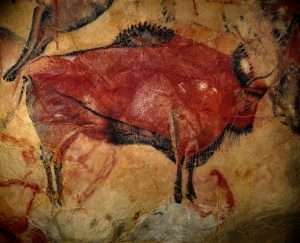I have always been fascinated by the nude in art. In this blog I will discuss the artistic value of the female nude, its historical importance and why it is still relevant today.
It is a common misconception that nudity is pornographic. This has become more and more apparent to me as I have begun my Art History course at university. Many people believe that nudity automatically creates something sexually arousing, and thus it is not art. This is actually very untrue . . . The Nude: A blog about the beauty of the female nude and its artistic value.
The blog is devoted to the artistic value of beauty and the nude. We celebrate the beauty of the female form, and celebrate artistic expression.
We believe that beauty is important to our lives. It inspires us, gives us pleasure, and helps us appreciate life in all its glory. The nude is a celebration of the body as an art form, and a celebration of human sexuality.
There are many great artists that have produced nudity in their work. Art history is full of great paintings of the female nude by masters such as Titian, Rubens, Velazquez, Caravaggio and Raphael, or sculptures such as Praxiteles’ Venus de Milo or Michelangelo’s David. We explore these artists’ work (and others) in our series “Artists we Love”.
We celebrate not just nudity in art but also on film. As such we love classic films that include nudity such as Stanley Kubrick’s “Eyes Wide Shut”, Almodovar’s “Tie Me Up! Tie Me Down!” and Lars Von Trier’s “Nymphomaniac Volumes I & II”.
We hope you enjoy this blog, it is our sincerest wish that it will bring joy to your day!
Art is a human activity, and we all need art to help us see and feel the world around us. The world is beautiful, but it can also be cruel and ugly. Art helps us deal with that fact by giving us an outlet for our emotions, by helping us understand the good, the bad and the ugly.
I am a painter of nudes. More specifically I paint nude women in sensual poses, often in romantic settings which are a little out of time. My paintings are not erotic or pornographic, but show women as people rather than objects. My goal is to paint works of art which will be appreciated by my collectors as well as by critics who will judge them on their artistic merit alone.
The blog will focus on the nude in art – how it is painted, what it means and why we find it beautiful when done well. It will also feature interviews with artists of both sexes and discuss topics that arise in their work. I hope you enjoy this journey into the heart and soul of beauty.”
A nude is a work of art depicting a figure in which the nakedness of the human body is the focus and central aspect of the work. The word “nude” generally refers to a human figure that exhibits the bare skin and bodily contours, without clothing or other objects to cover or conceal them. A photographic nudes uses a photograph, either as its subject or as an illustration to a larger work.
Tastes in art can vary greatly, both within cultures and over time. The study of the nude body is part of the discipline of art history rather than art appreciation.
The distinction between these two functions is not universally agreed upon. There are works found in certain ancient cultures that depict nudity, but which may be given different names.
A frequent example is the Venus figurines of prehistoric times, which were named after Venus because only later did the beauty of their form become appreciated as an object of worship, and only then was their status as folk art rediscovered.
Nudity in photography became popular with some photographers and artists from the late 19th century on. In fact, it was used for comic effect and to make social statements. Nudes have been used in many forms of media such as photography and film, on postage stamps and currency
Art is a matter of taste. But some kinds of art are better than others. Some art—and some artists—are worth more than others.
This is one of the most controversial statements you could make in the art world. Whereas in other fields such as science, progress is generally understood to be an improvement, in art it may be that the opposite is true: that new art is worse than old art, and that progress consists not of moving forward but of moving backward, to the glorious days of Michelangelo and Rembrandt.
This idea has little plausibility when applied to science, where progress is generally understood to consist both in new discoveries and in building on old ones. But it is almost a truism in the arts, where “old” and “new” are often considered opposites, so that any work of genius or importance must necessarily be old rather than new.
I don’t think this view actually has much influence on most people’s opinions about individual works of art, but it does have one important effect: It makes people less likely to notice or care about the difference between good and bad art; what matters is not whether a particular artist’s work is good or bad but merely whether it is old or new.


